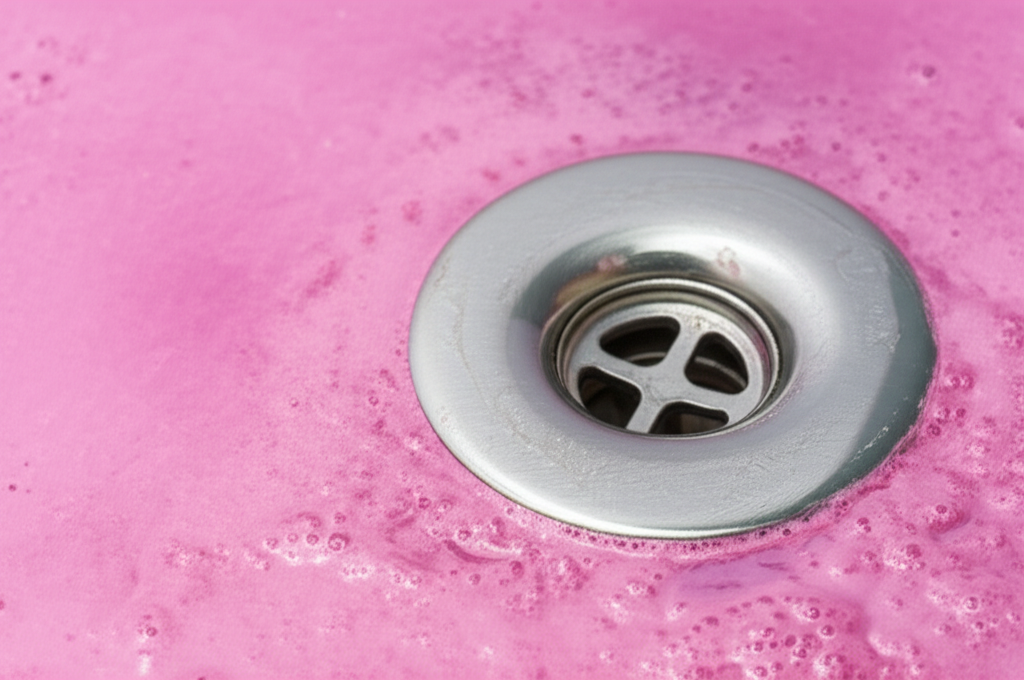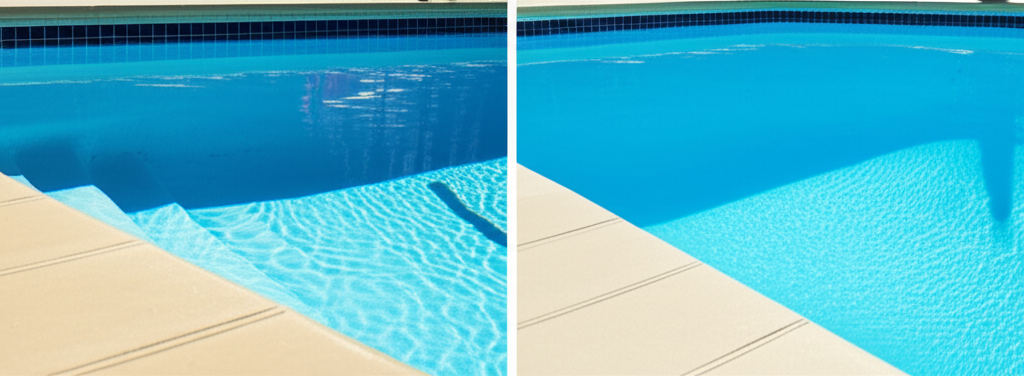- What Exactly Is Pink Slime?
- Debunking "Pink Algae Treatment" Misconceptions
- Identifying Pink Slime in Your Environment
- Ultimate & Quick Treatment for Pink Slime
- Preventing the Return of Pink Slime
Pink Slime is a commonly observed phenomenon that, despite its name, isn’t actually a slime and isn’t pink due to a strange growth but rather a common bacterium. Often found lurking in bathrooms, drains, pet water dishes, and even swimming pools, this reddish-pink film can be an unwelcome sight. While generally not harmful to healthy individuals, it signals an environment ripe for bacterial growth and warrants prompt attention. Understanding what pink slime is and how to effectively treat and prevent it is key to maintaining a clean and hygienic home.
What Exactly Is Pink Slime?
The culprit behind this mysterious “slime” is most often Serratia marcescens, a type of airborne bacterium. It’s not an algae, nor is it a fungus. Serratia marcescens thrives in moist environments, feeding on fatty deposits like soap scum, shampoo residue, and mineral deposits found in hard water. Its distinctive pinkish-red hue comes from a natural pigment called prodigiosin that the bacteria produces as it grows. Though commonly associated with bathrooms, you might also find it in humidifiers, dishwashers, toilet bowls, and frequently, in standing water left in pet bowls. While typically harmless to healthy people, it can be an opportunistic pathogen for those with weakened immune systems, particularly in hospital settings where it can cause urinary tract, respiratory, and wound infections.
Debunking “Pink Algae Treatment” Misconceptions
One common misconception is referring to this bacterium as “pink algae,” leading people to search for “Pink Algae Treatment.” However, applying products designed for algae might be ineffective or even unnecessary for Serratia marcescens. Algae are photosynthetic organisms requiring sunlight, while Serratia marcescens is a heterotrophic bacterium that thrives on organic matter and moisture. This distinction is crucial because the treatment strategies differ significantly. Effective eradication of Serratia marcescens focuses on disinfection and moisture control, rather than algaecides.
Identifying Pink Slime in Your Environment
Spotting pink slime is usually quite straightforward due to its distinctive color and texture. It typically appears as a slimy film or a reddish-pink stain. Common hot spots include:
Shower and Bathtub Areas: On shower curtains, grout lines, tile surfaces, and especially around drains.
Toilets: Within the toilet bowl, particularly at the waterline or in neglected rim jets.
Sinks and Faucets: Around the base of faucets, inside sinks, and in drain openings.
Pet Water Bowls: A frequent problem, as bowls provide a continuous source of moisture and organic matter.
Humidifiers: Inside water tanks and on humidifier filters, due to constant moisture.
Pools and Hot Tubs: On surfaces, steps, or ladders, particularly if water chemistry is unbalanced.
Ultimate & Quick Treatment for Pink Slime
Tackling pink slime effectively requires a multi-pronged approach of physical removal, disinfection, and preventative measures.
1. For Bathrooms and Household Surfaces:
Mechanical Removal: Begin by physically scrubbing the affected areas with a stiff brush or abrasive sponge. This is crucial for breaking down the protective biofilm that the bacteria form.
Disinfection:
Bleach Solution: For non-porous surfaces, a diluted bleach solution (1/4 cup bleach per gallon of water) is highly effective. Apply, let sit for 10-15 minutes, then scrub and rinse thoroughly. Always wear gloves and ensure good ventilation. Never mix bleach with ammonia-based cleaners.
Hydrogen Peroxide: A 3% hydrogen peroxide solution can also be used as a disinfectant, especially for areas where bleach is not suitable. Spray directly, let it fizz, then wipe clean.
Distilled White Vinegar: For mild cases or as a follow-up, undiluted white vinegar can help. Apply, let sit for 30 minutes, then scrub. While not as powerful a disinfectant as bleach against all bacteria, it’s good for mineral deposits and general cleaning.
Shower Heads and Faucets: Mix equal parts white vinegar and water in a plastic bag, secure it around the shower head or faucet outlet, and soak overnight to remove both slime and mineral buildup.
Porous Surfaces (Grout, Caulk): These areas are particularly challenging as the bacteria can embed. Use a grout brush with your chosen disinfectant and ensure thorough scrubbing. You may need repeated treatments.
Drains: Pour boiling water down the drain, followed by a cup of baking soda and then a cup of vinegar. Allow it to sit for 30 minutes before flushing with more hot water. This helps clear organic matter that Serratia marcescens feeds on.
2. For Pet Water Bowls:
Daily Cleaning: The most effective treatment is prevention. Clean pet bowls daily with hot, soapy water.
Disinfection: Periodically (e.g., weekly), disinfect bowls by soaking them in a diluted bleach solution (1 teaspoon bleach per gallon of water) for 10-15 minutes, then rinse extremely thoroughly to ensure no bleach residue remains, or run them through a dishwasher on a hot cycle.
3. For Humidifiers:
Weekly Cleaning: Disassemble the humidifier and clean all washable parts with a mixture of equal parts white vinegar and water. Use a brush to scrub away any slime. Rinse thoroughly.
Filter Replacement: Replace filters regularly as per the manufacturer’s instructions.
4. For Pools and Hot Tubs:
Shock Treatment: If pink slime appears, perform a superchlorination (shock treatment) to kill bacteria. Follow product instructions carefully.
Scrubbing: Thoroughly brush all surfaces, steps, and ladders to dislodge any attached biofilm.
Filter Cleaning: Backwash or clean your pool filter thoroughly to remove any trapped bacteria.
Water Chemistry: Ensure your pH, alkalinity, and chlorine levels are consistently balanced as per recommended guidelines.
Preventing the Return of Pink Slime
Once you’ve eliminated the existing pink slime, the focus shifts to prevention. Consistent effort is key.
Control Moisture:
Ventilation: Use exhaust fans during and after showers for at least 30 minutes. Open windows if possible.
Wipe Down Surfaces: After showering, quickly wipe down shower walls, curtains, and glass doors to remove excess moisture and soap residue.
Repair Leaks: Address any leaky faucets or pipes that create constant dampness.
Regular Cleaning:
Routine Scrubbing: Incorporate a weekly scrub down of bathroom surfaces with an all-purpose cleaner or disinfectant.
Pet Bowls: Continue daily cleaning and regular disinfection.
Humidifiers: Stick to a weekly cleaning schedule.
Eliminate Food Sources:
Rinse After Use: Promptly rinse bathtubs and showers after use to wash away soap scum and body oils.
Clean Drains: Periodically clean drains to prevent organic matter buildup.
Water Quality Maintenance (Pools/Hot Tubs): Test and adjust your water chemistry regularly to maintain appropriate sanitizer levels.
By understanding that pink slime is primarily the bacterium Serratia marcescens, not algae, and by implementing regular cleaning and moisture control measures, you can effectively treat and prevent this common household nuisance. A proactive approach will keep your environments clean, hygienic, and free of unsightly pink growths.




